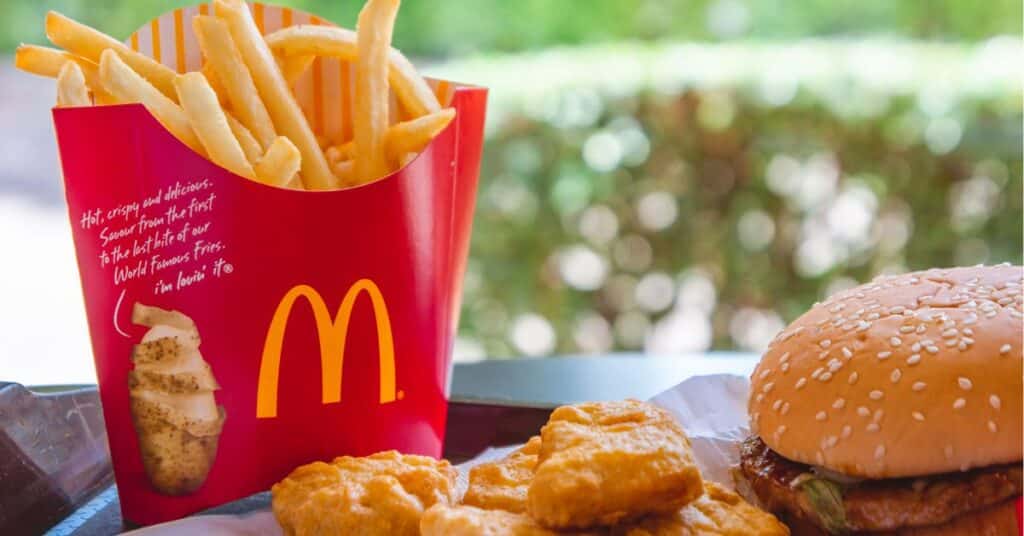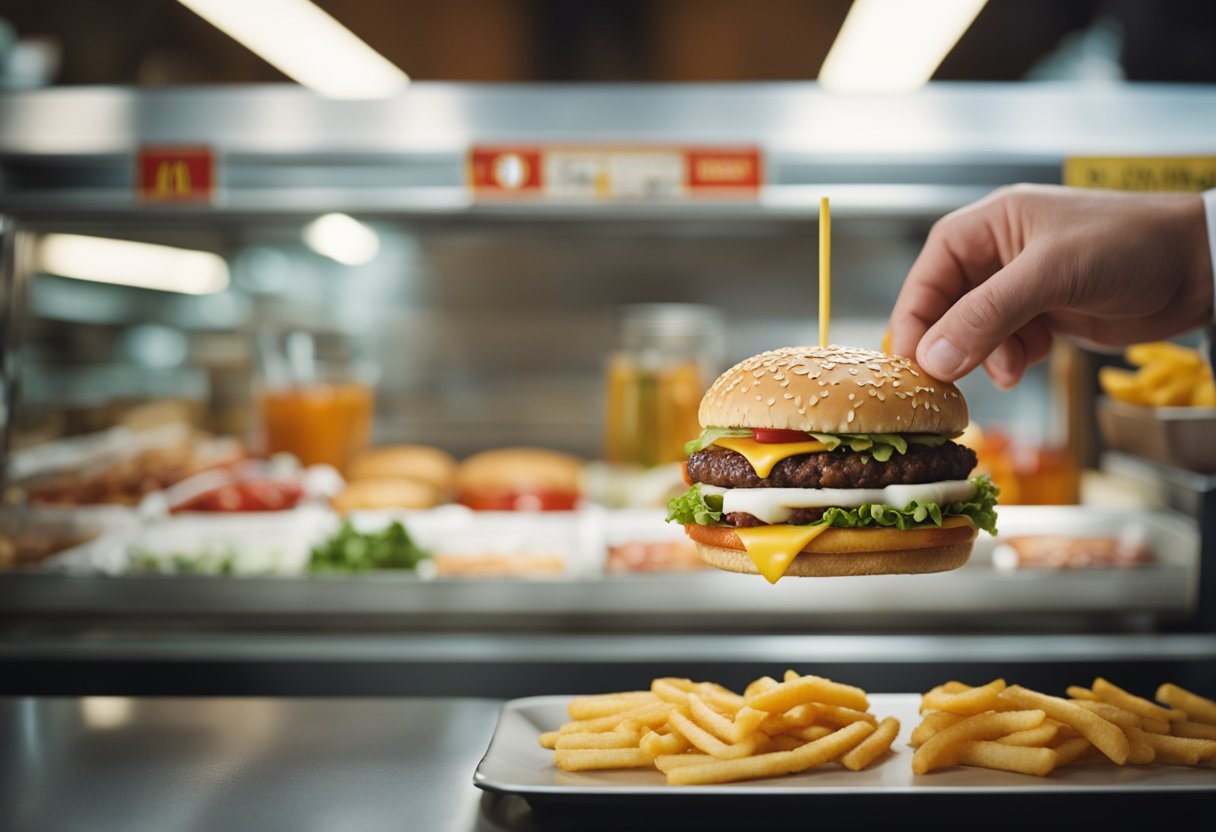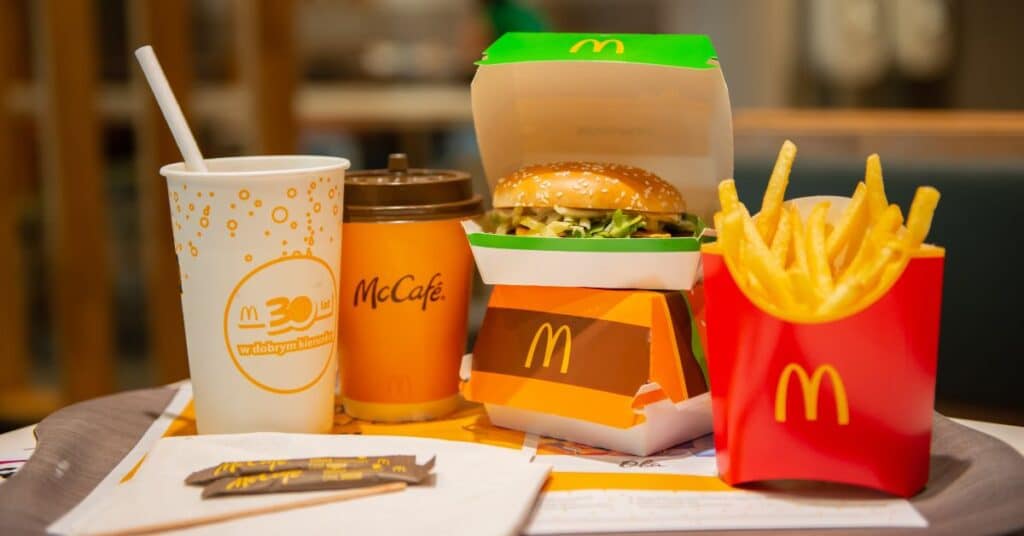Sometimes you might find yourself with a leftover McDonald’s burger, and you don’t want that Big Mac or Quarter Pounder to go to waste. The challenge is, how do you reheat it so that you catch a glimpse of its former glory, freshly served from the fast food counter? It’s all about technique, ensuring the burger retains its flavor and texture, making your meal almost as enjoyable as when it was freshly made.
Reheating a fast food burger isn’t as straightforward as tossing it into the microwave, especially if you’re aiming to avoid a soggy bun or dried-out patty. You’ll want to approach this task with a bit of care, using the right heat settings and times, whether you’re employing a microwave, oven, or skillet. Each method has its perks and can bring your McDonald’s burger back to a warm and appetizing state.
Choosing Reheating Tools and Methods
Selecting the right reheating method is crucial for restoring your McDonald’s burger to its tasty glory while maintaining texture and flavor.
Micro-Wave Friendly Techniques
To reheat in the microwave, place your burger on a microwave-safe plate and cover it with a paper towel to trap moisture and prevent it from drying out. Heat it at a medium power level for short intervals, checking frequently to ensure that the burger is warmed evenly without becoming soggy.
Oven and Toaster Oven Methods
For a crispy outcome, your oven or toaster oven are excellent choices. Preheat them to 350°F and place the burger on a baking tray or baking sheet covered with aluminum foil. Heat it for about 10 minutes, monitoring to avoid overcooking, which can toughen the meat and dry out the toppings.
Stovetop Rejuvenation
A stovetop method involves a frying pan or skillet. Warm your pan over medium heat, add the burger patties, and cover them with a lid for a few minutes. This frying process can help restore the original flavor and texture. Warm the buns separately to retain their softness.
Air Fryer Advantage
The air fryer offers a method to reheat and regain a crispy edge. Preheat your air fryer to 350°F and place the burger inside for about 3-4 minutes. This is efficient and helps minimize moisture loss, keeping the fries and burger crispy.
Handling Condiments and Toppings
Preparing a McDonald’s burger for reheating requires careful attention to the condiments and toppings to maintain the best flavor and texture.
Managing Cheese and Proteins
When reheating your burger, remove the cheese and protein from the burger. Place them aside in a warm spot. This will prevent the cheese from becoming too oily and the protein, especially if it’s a Chicken patty or Filet-O-Fish, from becoming rubbery. When the bun and veggies are warmed up to your liking, you can reassemble the burger with the cheese and protein so the residual heat can warm them gently.
- Cheese: Set aside; reintroduce after reheating the rest.
- Burger: Heat separately; avoid overcooking.
Dealing with Veggies and Add-Ons
Remove lettuce, tomatoes, pickles, and any other fresh toppings before reheating. They are not meant to be warmed as they will lose their crispness and can become wilted and soggy, which isn’t what you’re looking for in a fresh burger experience. After reheating, add them back to your burger to preserve their freshness and crunch.
- Lettuce: Remove and add after reheating
- Tomatoes: Remove and add after reheating
- Pickles: Remove and add post-reheat
Sauces and Customizations
Typically, condiments like ketchup, mustard, and burger sauce are already applied inside your McDonald’s burger. It is best to leave these in place when reheating, as they’re usually in small enough quantities not to cause sogginess. If the burger has an abundance of sauce, consider scraping some off and reapplying it after reheating to avoid a soggy bun. Always remember to apply salt or other seasonings after reheating if you feel it needs a little enhancement.
- Ketchup/Mustard: Leave in place unless excessive.
- Big Mac Sauce: Leave in place; reapply if needed post-reheat.
Frequently Asked Questions
When reheating your McDonald’s burger, it’s important to aim for a balance between maintaining flavor and ensuring food safety.
What’s the most effective method to warm up a fast food burger without using a microwave?
To warm up a fast food burger without a microwave, try using a skillet on medium heat. Lightly toast the buns separately for a few minutes, and then heat the patty for about a minute on each side to ensure it’s warmed through.
Is it safe to microwave a burger still in its original wrapper?
No, do not microwave the burger in its original wrapper because it contains metallic elements that are not microwave-safe. Instead, transfer the burger to a microwave-safe plate and cover it with a paper towel.
What is the recommended way to reheat chicken nuggets from McDonald’s?
For chicken nuggets, preheat your oven or toaster oven to 350 degrees Fahrenheit and bake them on a wire rack for about 10 minutes or until they’re hot and crispy.
Could you give tips for reheating a Quarter Pounder to retain its taste and juiciness?
To maintain the taste and juiciness of a Quarter Pounder, gently heat it in a pan over a low flame. Warm the patty separately, adding a teaspoon of water to create steam, then assemble the burger and heat for an additional minute.
What do fellow food lovers suggest as the best technique to reheat a McDonald’s burger based on Reddit discussions?
Reddit users often recommend deconstructing the burger and heating the elements separately. Warm the burger patty in a skillet, toast the bun, and add cheese last to melt.
How long can a McDonald’s burger be kept before reheating, and is it still safe to eat the next day?
A McDonald’s burger can be stored in the fridge for up to 24 hours before reheating. Always ensure the burger has reached 165 degrees Fahrenheit internally to be safely consumed.



